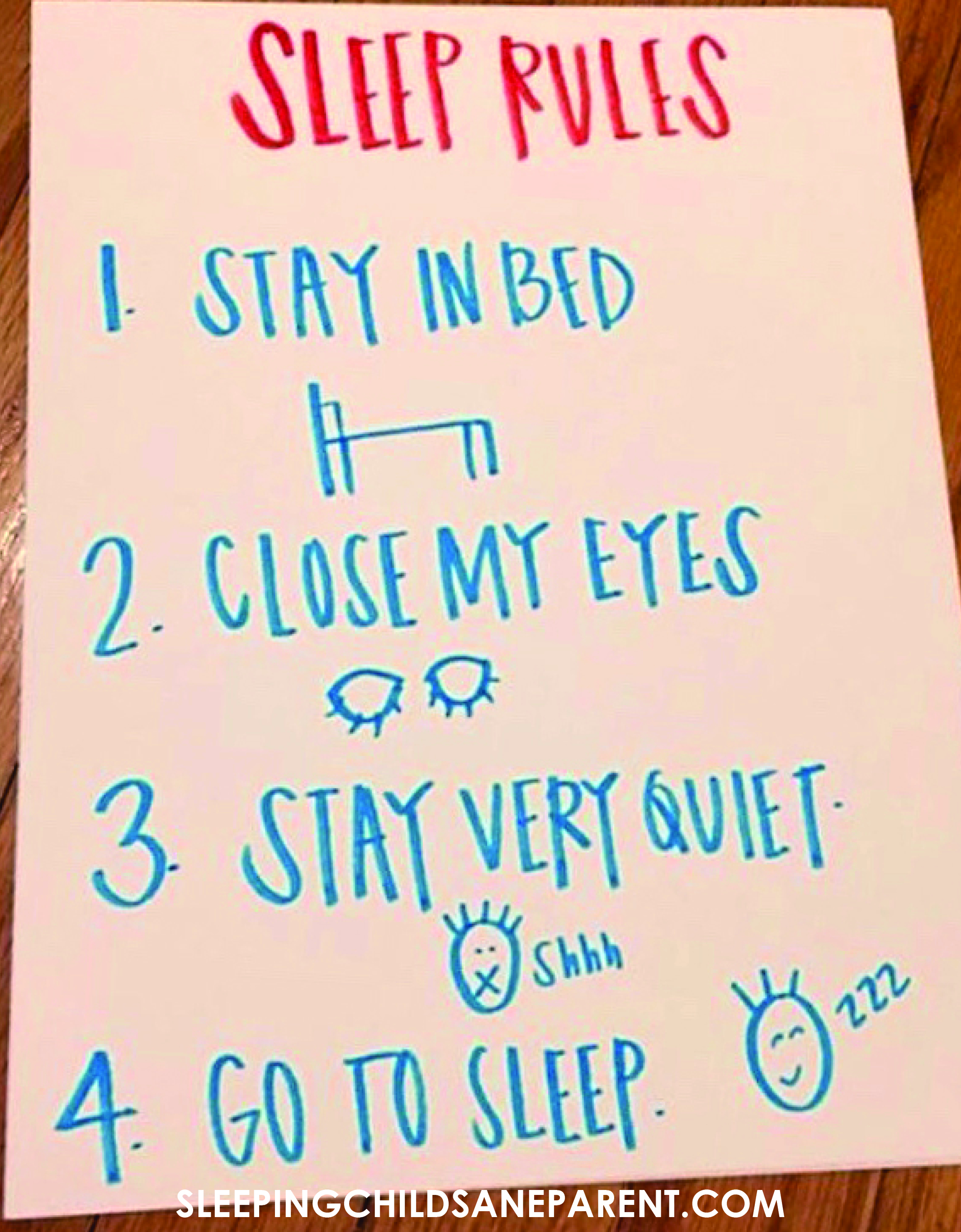Last week I talked about WHEN to move your child from a crib to a bed. This week is all about HOW. When kids move from a crib to a bed, they suddenly have the freedom to leave their bed, and many kids will take advantage of this! You might just wind up with your child in your bed. Many people enjoy the company of their children in bed, and as long as you're sleeping safely, there is no problem with that. If, however, you fall in the other camp of wanting to keep your bed to yourself, follow the steps below to teach your child to stay in her own bed. These tips work whether you're just starting the transition or whether your child has been coming into your bed for months now.
1. The Family Meeting
Gather your child (or children) for a meeting with Mom and Dad. Let her know that when it comes to sleep, things are going to change. Tell her this is not a punishment, but rather a change because you love her very much. Because you love her, you want her to get good sleep so that she can be healthy and happy. Explain that when the whole family is happy, healthy, and well rested, Mom and Dad are in better moods and there can be more family fun! Explain the sleep rules and reward chart, and outline what you will do if anyone does not follow the sleep rules. This includes describing the silent return and locked doors. Make sure you can follow through with any rewards or punishments you promise, as this is key in showing your children that things are going to change.
2. The Sleep Rules
The sleep rules are:
I stay in bed.
I close my eyes.
I stay very quiet.
I try to sleep.
Create a poster either before or during the family meeting that has the sleep rules both written and illustrated (for children who can’t read yet). Allow the family to help decorate the poster to take some ownership of these rules. Display the poster in your child's bedroom following the family meeting, and review the rules as part of your bedtime and naptime routines.
The poster does not need to be fancy, it just needs to be clear.
3. Reward/Sticker Chart
Create a sticker chart (for each child you're trying to teach) and tell your child that any night she follows all of the sleep rules, she gets to put a sticker on her chart. This means if she stays in bed but keeps yelling for you, she does not get a sticker (because she's broken rule #3). After 3 stickers, give her a small reward of your choosing. The reward can be the same or different with each following success – whatever you think will work better for your kids. Make sure to tailor the prizes to your specific children; if it’s a prize they’re not interested in, they won’t work toward it. For many children, it's more effective to use rewards that are logical. We need sleep in order to have the energy to play, so perhaps a reward could be a trip to the trampoline park (or any other activity that requires a lot of energy). After 2 or 3 rewards, increase the amount of stickers required to get a reward. Continue to stretch out the time between rewards until you fully give up the chart and your child follows the rules without it.
If rewards don't seem to be motivating your child, you can also implement punishments for nights where the sleep rules are not followed. Again, use logical punishments. When a child doesn't follow the sleep rules, parents and/or child doesn't have the necessary energy to play, so perhaps the punishment is that everyone has to stay home this afternoon and play inside.
Here's one example of a sticker chart. You can do yours in any way that works for you!
4. The Silent Return
Anytime your child gets out of bed, take her hand (or if necessary, pick her up), silently return her to her bed, and promptly leave (allowing her to get back into bed on her own). Do not talk to her, discipline her, remind her it’s bedtime, tuck her in, hug her, kiss her, smile at her, look in her eyes, linger while she gets into bed, or anything else you might think of. Any attention at all, whether positive or negative, can reinforce the behavior. Therefore, remain as stone-faced as humanly possible throughout the entire process. You may get frustrated and exasperated, but try not to let those things show in your face or body language. Find a peaceful and helpful thought to keep with you throughout the process, and expect that your first few nights of training may be full of returns (we're talking 80-200 returns). Save all discipline/praise for the morning.
If you have a lock on your door, you can lock your door when you go to sleep, and do not react to your child if she comes to your door in the middle of the night. Let her pound or yell or fall asleep on the floor outside your door, but do not talk to her through the door.
If you do not have a lock on your door, hang a bell on your doorknob and shut your door when you go to bed. That way, if your child tries to sneak into your room after you've fallen asleep, hopefully the bell will wake you, and you can then do silent returns as described above.
If both parents want to participate in the silent return, that's great, but there are some guidelines. You can switch which parent returns the child to bed each night (i.e. Mom does Monday night, Dad does Tuesday night, Mom does Wednesday night, etc.), but do not switch mid-night. So if your child goes to bed at 7:00pm and Mom is doing the silent returns initially, don’t switch to Dad at 9:30pm because Mom is worn out. We don’t want the kids getting the impression that they’re getting the best of Mom or Dad, or that if they put up a big enough fight they’ll get to hang out with their desired parent.
5. Anticipate Needs and Be Prepared
Finally, make sure to anticipate the needs of your child before putting her to bed. Make sure she's been properly hugged, had a drink, and gone to the bathroom, so that when she starts asking for these things after you've put her to bed, you don't have to worry about whether or not she really needs these things, so you can continue to ignore her as you're supposed to.
Additionally, be prepared for your child to pull out all the stops to get your attention. She's used to you responding to her when she acts out -- she won't know what to do when you don't respond to her at all! When she can't get attention in her usual ways, she'll become more creative. You must continue to ignore everything she does (while obviously taking care to make sure she stays safe). Eventually she'll realize that nothing she does is going to get her the attention she wants, so she may as well just go to sleep.
If you follow this plan as outlined, your child will be sleeping in her own bed all night long in no time. Doesn't it sound nice to have your bed kid-free again?




